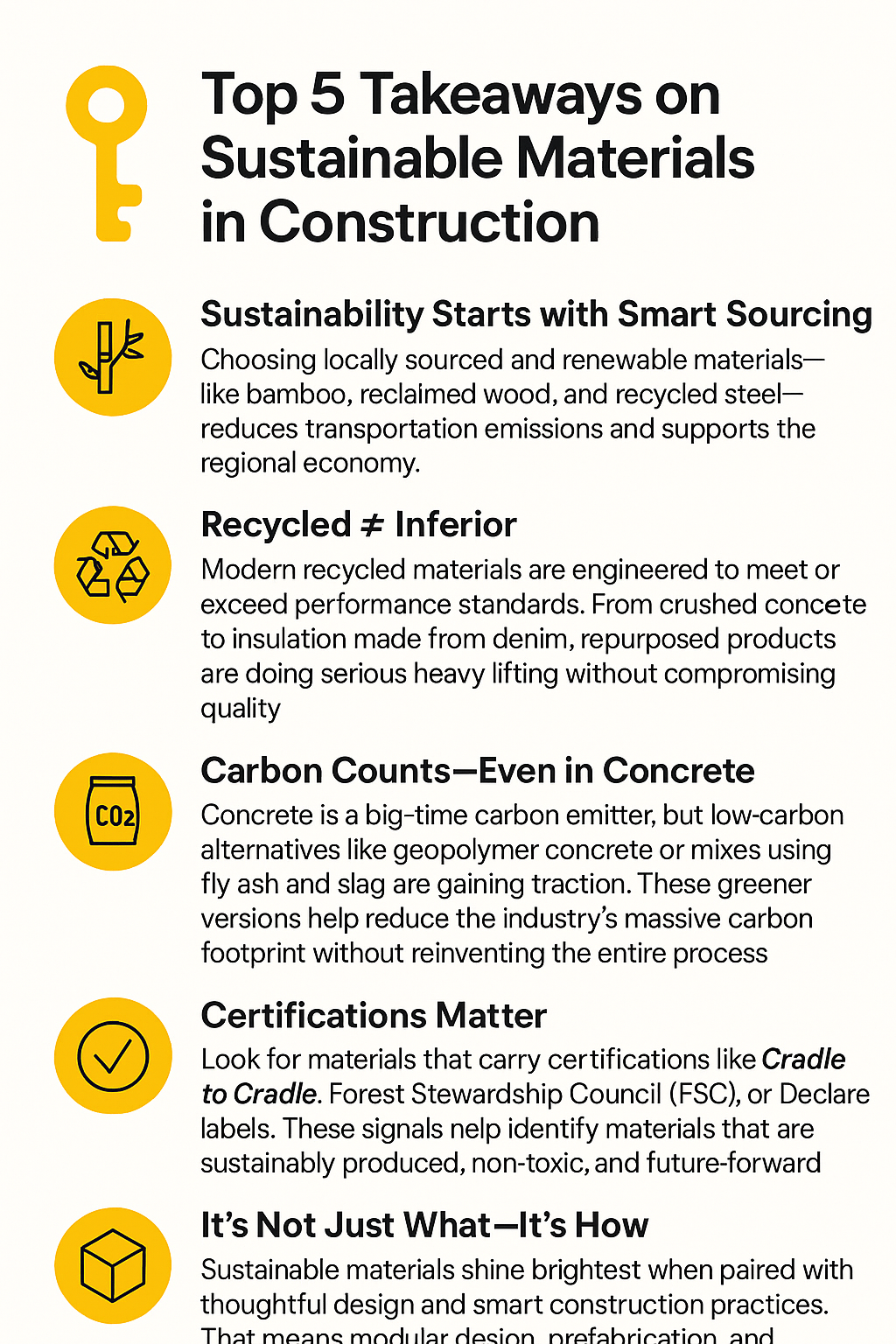1. Sustainability Starts with Smart Sourcing
Choosing locally sourced and renewable materials—like bamboo, reclaimed wood, and recycled steel—reduces transportation emissions and supports the regional economy. Bonus: they often come with unique character and durability.
2. Recycled ≠ Inferior
Modern recycled materials are engineered to meet or exceed performance standards. From crushed concrete to insulation made from denim, repurposed products are doing serious heavy lifting without compromising quality.
3. Carbon Counts—Even in Concrete
Concrete is a big-time carbon emitter, but low-carbon alternatives like geopolymer concrete or mixes using fly ash and slag are gaining traction. These greener versions help reduce the industry’s massive carbon footprint without reinventing the entire process.
4. Certifications Matter
Look for materials that carry certifications like Cradle to Cradle, Forest Stewardship Council (FSC), or Declare labels. These signals help identify materials that are sustainably produced, non-toxic, and future-forward.
5. It’s Not Just What—It’s How
Sustainable materials shine brightest when paired with thoughtful design and smart construction practices. That means modular design, prefabrication, and material-efficient planning to minimize waste and maximize longevity.
Was that quick and easy?






